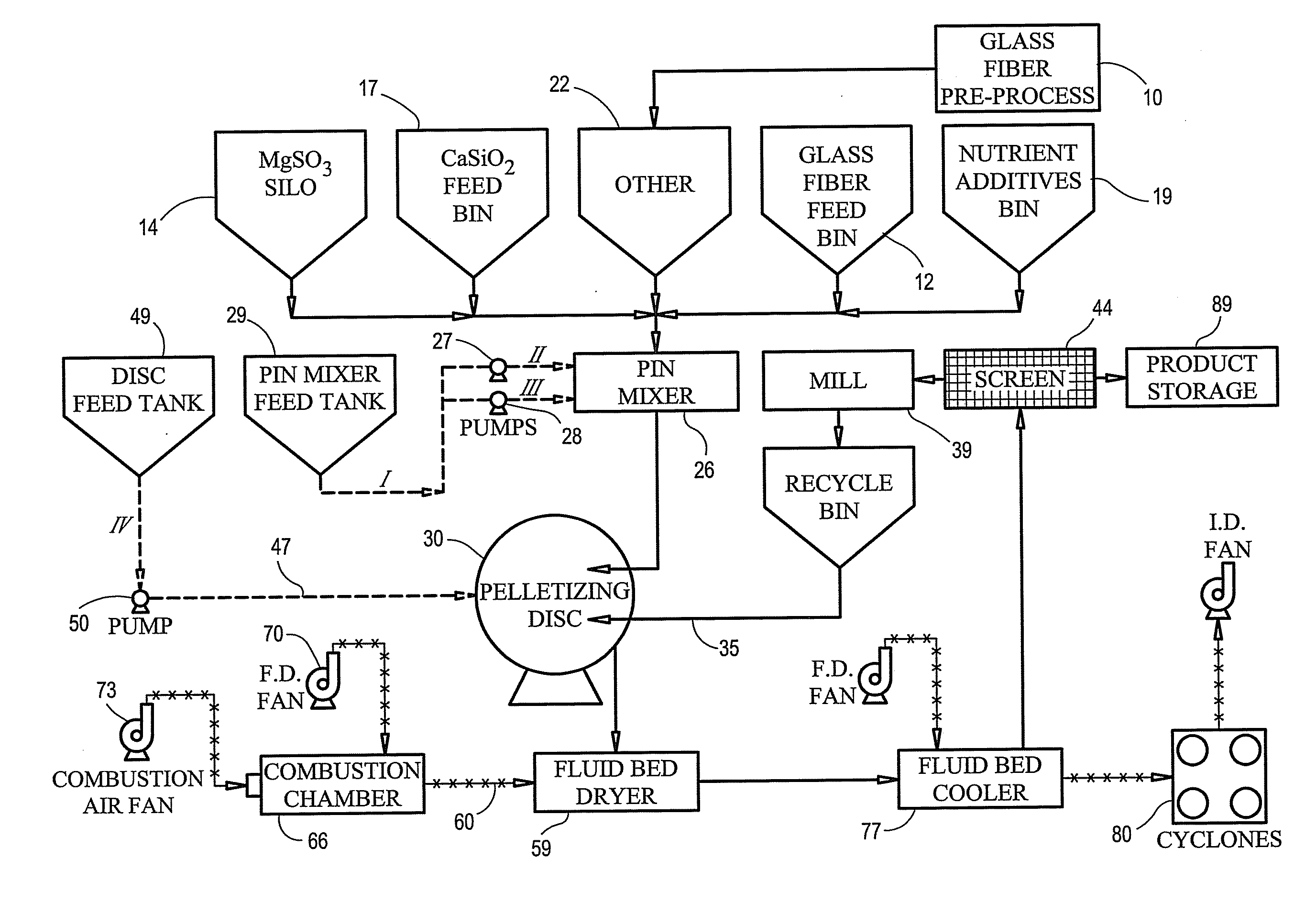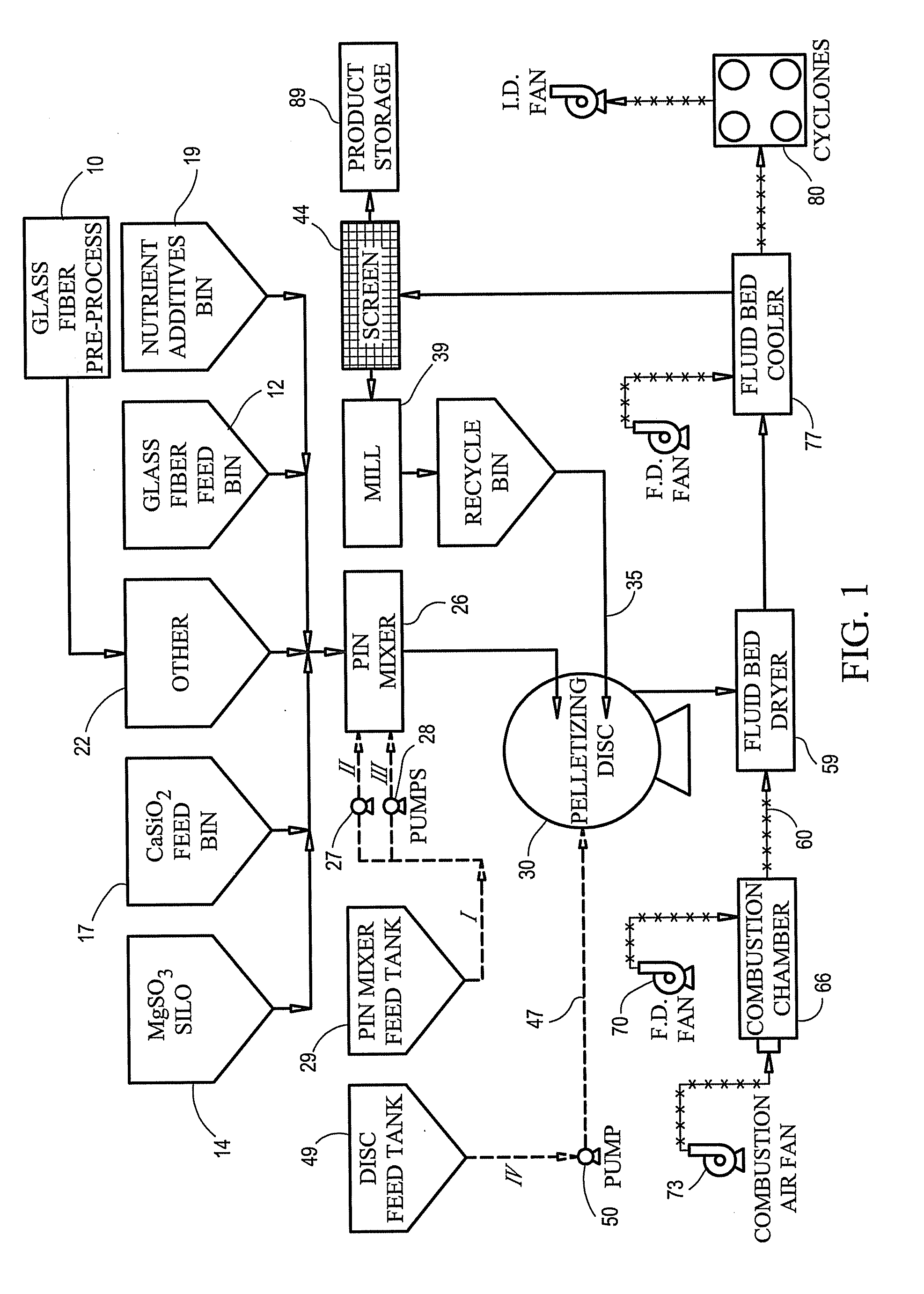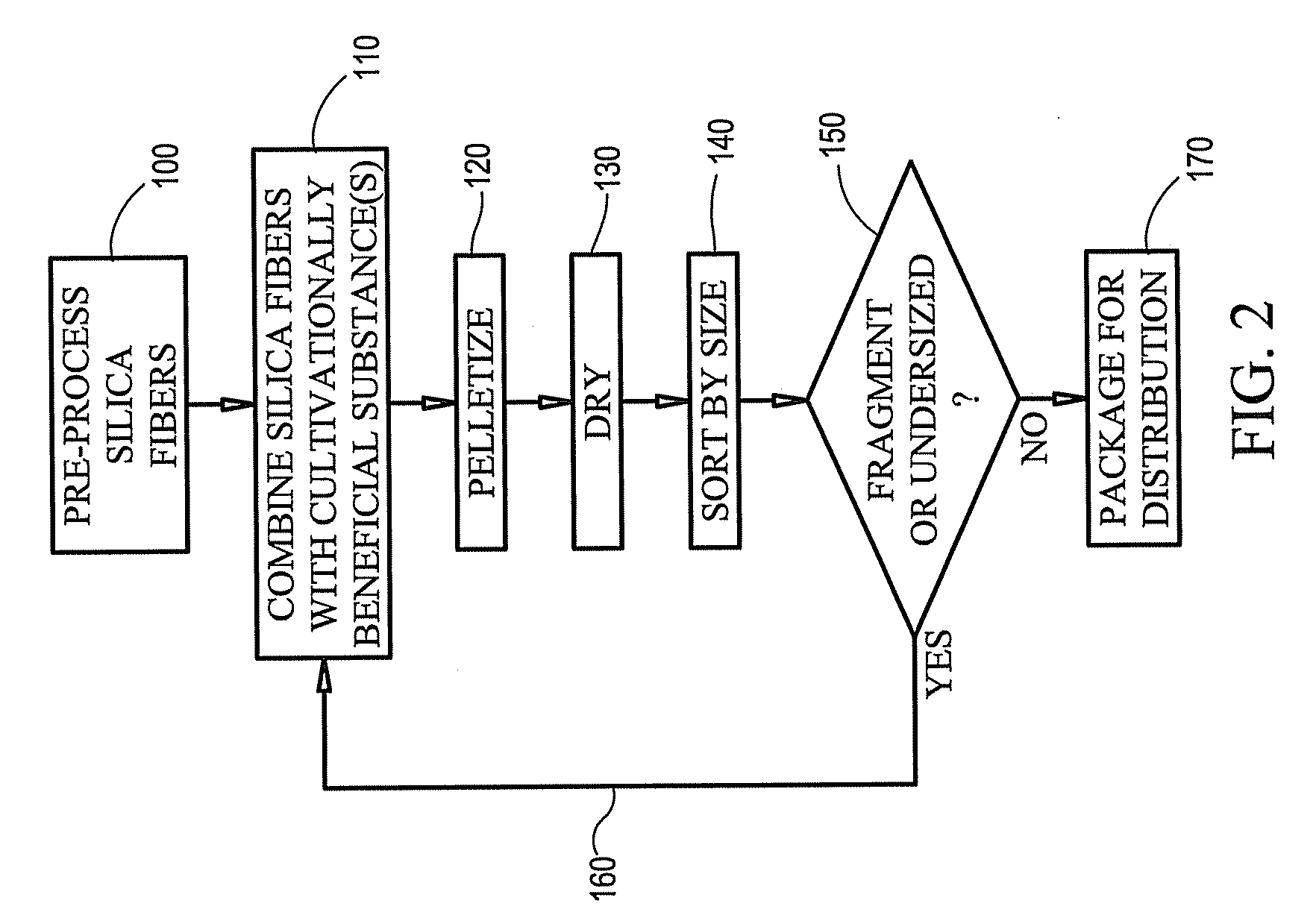Agricultural pellet and method of making same
a technology of agricultural pellets and binders, applied in the field of agricultural pellets, can solve the problems of undesirable economic efficiency of such agricultural pellets, inability to participate in the nutritionally “non-participating” binders, and inability to use portland cement, etc., to achieve the effect of reducing pellet breakage, increasing or decreasing the mechanical reinforcing effect of fibers, and enhancing the structural integrity of pellets
- Summary
- Abstract
- Description
- Claims
- Application Information
AI Technical Summary
Benefits of technology
Problems solved by technology
Method used
Image
Examples
Embodiment Construction
[0027]An agricultural pellet according to the invention is comprises non-crystalline silica fibers blended with at least one or more other nutrient substances such that the silica fiber is substantially evenly distributed throughout the body of the pellet to provide an interlaced, three-dimensional mechanical matrix in which the silica fibers are substantially randomly directionally oriented. This silica fiber matrix serves as a source of bio-available silicon mechanically reinforces the pellet to reduce premature mechanical breakage during manufacture, packaging, shipment and spreading. In certain preferred embodiments, the agricultural pellet comprises both silica fiber and calcium silicate. The latter not only provides additional bio-available silicon, but also reacts pozzolonically with the silica fibers to impart additional structural strength to the pellet. If desired, one or more other, nutritionally participating or non-participating, binding agents, such as Portland cement ...
PUM
| Property | Measurement | Unit |
|---|---|---|
| length | aaaaa | aaaaa |
| width | aaaaa | aaaaa |
| axial length | aaaaa | aaaaa |
Abstract
Description
Claims
Application Information
 Login to View More
Login to View More - R&D
- Intellectual Property
- Life Sciences
- Materials
- Tech Scout
- Unparalleled Data Quality
- Higher Quality Content
- 60% Fewer Hallucinations
Browse by: Latest US Patents, China's latest patents, Technical Efficacy Thesaurus, Application Domain, Technology Topic, Popular Technical Reports.
© 2025 PatSnap. All rights reserved.Legal|Privacy policy|Modern Slavery Act Transparency Statement|Sitemap|About US| Contact US: help@patsnap.com



